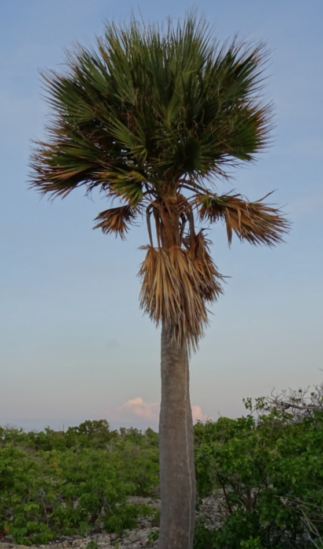Saving a newly discovered, critically endangered tree from extinction
Botanists identified a new species of palm tree on the Caribbean island of Bonaire last year – but without urgent action, it could be extinct within just a few years. Seacology is aiming to prevent that.
Any species – plant or animal – that evolves on an isolated island is especially vulnerable to extinction. If it disappears from that island, it disappears from the planet. But when we talk about extinctions on islands, many people think of animals first: the mammals, birds, insects, and other animals whose survival is threatened by unsustainable development or invasive species. But endangered plants face these same challenges, too.
Saving the critically endangered Bonaire palm will take quick action – and yield big results. “To plant aficionados, the closest thing to big game animals are palm trees. Protecting a palm species from extinction is the botanical equivalent of saving Asian snow leopards or Javanese rhinos,” explained Dr. Paul Cox, a Seacology co-founder and prominent ethnobotanist.

The only known Bonaire palm trees (Sabal lougheediana) grow on a small part of Bonaire Island, a territory of the Netherlands just north of Venezuela. The island is only about 10 miles across. There are only about 25 mature specimens of this critically endangered tree still standing. No new trees are growing, either, because the feral goats and donkeys that roam the island eat the seedlings when they’re small. They never get a chance to grow to maturity and reproduce.
Fortunately, this urgent problem has a simple solution. Working with the local NGO BonBèrdè, Seacology is funding construction of a fence around the main stand of trees, which will keep the hungry herbivores away. (Smaller native animals like lizards and iguanas can get through a fence easily, so their access to their habitat will be unobstructed). We are also partnering with the Florida-based Montgomery Botanical Center, where botanists will raise seedlings that can be planted over a wider area.
The Bonaire palm was classified as a distinct species only after studies differentiated it from other Caribbean palms in the same genus. Comparisons with older survey data estimate that the territory in which the Bonaire palm is found has shrunk dramatically since the late 1970s, from five square kilometers to just one.

